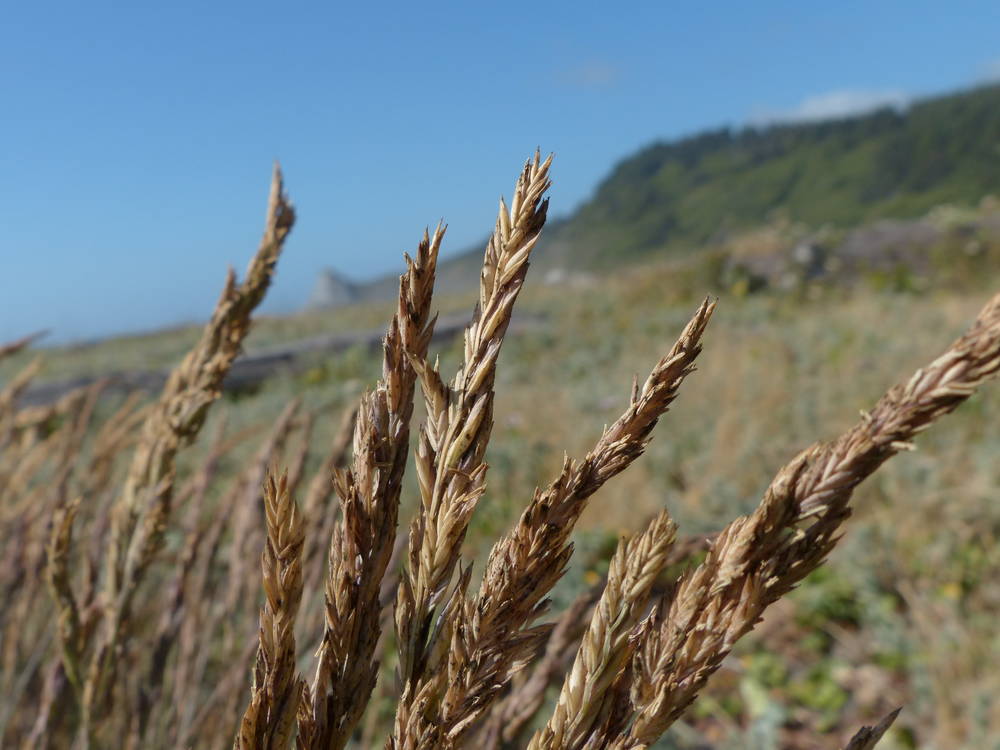
Plants (8)10–120(130)cm tall, strongly rhizomatous to densely cespitose; shoots occasionally solitary, usually green, occasionally glaucous; basal branching intra- or extravaginal.
Leaves mainly basal; sheaths closed for about 75% of their length; margins fused, readily splitting with age, with retrorse hairs but sometimes antrorsely hairy or glabrous, shredding lengthwise and becoming brown with contrasting whitish veins or remaining intact and gray-brown; ligules 0.1–0.5 mm; blades 4–40+cm, generally 0.3–2.5 mm in diameter and conduplicate or less often 1.5–7 mm wide and flat; generally green, sometimes glaucous; outer/lower surface usually smooth and glabrous but sometimes scabrous; inner/upper surface scabrous or pubescent; flag leaves 3–15 cm; conduplicate leaves usually diamond-shaped or triangular in cross section; veins (5)7–9(13), ribs (3)5–7(9), usually conspicuous.
Leaf anatomy dorsal sclerenchyma in 5–9(13) bands less than 2 times as wide as thick (on plants from serpentine soils sometimes with the marginal and adjacent bands confluent, creating a single large band that is more than 2 times as wide as thick); ventral sclerenchyma sometimes present in the tips of the ribs.
Inflorescences (2)3.5–25(30) cm, usually open or loosely contracted, sometimes dense; lowest node with 1–3 branches; branches appressed after anthesis or sometimes the lowest spreading.
Spikelets (6)7–17 mm, 3–10 florets, often green to reddish or brown, some forms strongly glaucous, marked with blue, turquoise or lavender.
Glumes ovate-lanceolate to lanceolate, sometimes with narrow hyaline margins; lower glumes (1.5)3.5–5(7)mm, 1(3)-veined; upper glumes (3)4– 6.5(8.5)mm, (1)3-veined.
Lemmas 4–8(9.5)mm, 0(1)-veined, glabrous and smooth but sometimes scabrous toward the tips or densely pubescent throughout, attenuate or acuminate in side view, usually awned; lemma awns (0.1)0.4–4.5 mm, shorter than the lemma body.
Approximately 10 subspecies; 6 subspecies treated in Flora.
Green, rhizomatous forms of F. rubra are easily identified, but cespitose plants are often confused with F. roemeri; see discussion under that species. Near timberline F. rubra can be confused with F. viridula, a cespitose species that has the lower leaf blades reduced to small points. Festuca rubra includes a diversity of intergrading taxa that are not easily delimited. The many diverse forms of Pacific Northwest F. rubra have been described as subspecies, but additional work is needed to clarify F. rubra taxonomy.